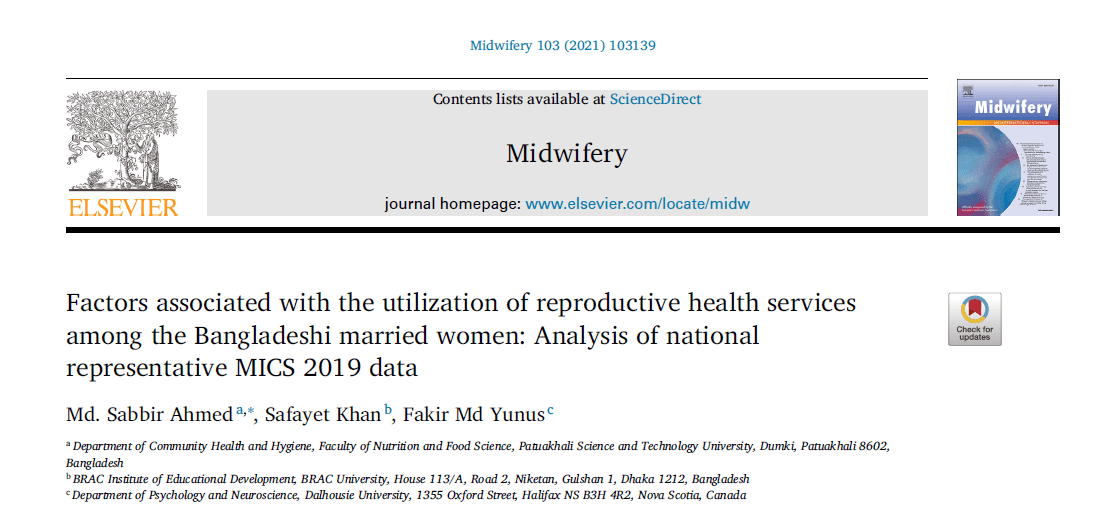Research article on factors associated with the utilization of reproductive health services among the Bangladeshi married women
A study was conducted by Md. Sabbir Ahmed, Safayet Khan, Fakir Md Yunus on ‘Factors associated with the utilization of reproductive health services among the Bangladeshi married women: Analysis of national representative Multiple Indicator Cluster Survey (MICS) 2019 data’
In this study, the researchers calculated the prevalence of reproductive health services utilization among the currently married non-pregnant women in Bangladesh and investigated its association with demographics and socio-economic factors.
Methods: Publicly available secondary country representative 2019 Multiple Indicator Cluster Survey (MICS) dataset was analyzed. A two-stage stratified random sampling technique was followed, and all administrative districts (N = 64) of Bangladesh were covered in the MICS 2019. Contraceptive use, antenatal care and skilled birth attendant were considered as utilization of reproductive health services and both crude and adjusted Odd Ratio (OR) were reported using a total of 8917 (weighted) data.
Results: In Bangladesh, 36.9% of married non-pregnant women utilized all three reproductive health services. However, at disaggregated level, contraceptive use (66.9%), antenatal care (83%) and skilled birth attendant (59.3%) were found 2-3 folds higher then cumulative prevalence. Increased likelihood of utilization of repro- ductive health services (either combined or at individual services) was observed among those women who had higher education [AOR = 2.63, 95% CI 1.99 to 3.47], belong to wealthy families [AOR = 2.46, 95% CI 1.94 to 3.12], residing in urban areas [AOR = 1.33, 95% CI 1.14 to 1.54], having a smaller number of children [AOR = 1.53, 95% CI 1.25 to 1.87], and exposure to media [AOR = 1.44, 95% CI 1.26 to 1.63].
Around one-third of Bangladeshi married women received combined contraceptive use, antenatal care and skilled birth attendant reproductive health services; however, variation exist at the individual service level. Targeted public health campaign focusing on women education and media advertisement may increase the utilization.
Source: ScienceDirect

